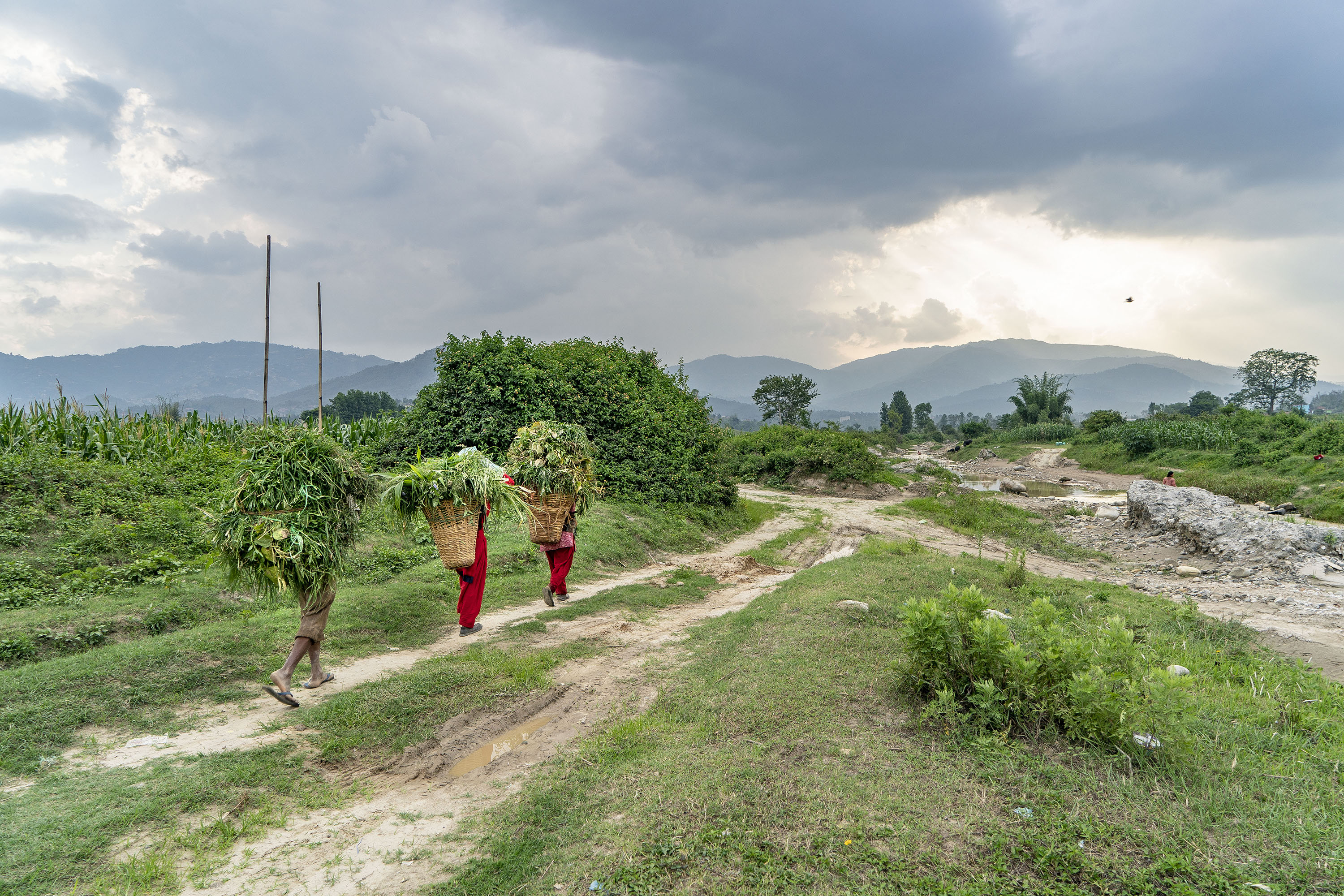In rural agrarian economies, the period between planting and harvest is often a “lean season” when labor demand and wages fall, and the price of staples rise. The landless poor reliant on agricultural work on others’ farms are especially hard hit, and many millions of laborers and their families worldwide suffer from seasonal hunger. This problem is acute in rural South Asia, where the majority of the world’s poor live, and where the majority of those poor are landless. A series of studies in Northern Bangladesh has generated strong evidence that in Northern Bangladesh, subsidies to encourage seasonal migration to more vibrant labor markets during this lean period successfully reduce seasonal hunger for migrants, are 5-10 times as effective as traditional food aid programs, and have positive or null effects on other important outcomes.
We attempt to expand this line of inquiry to rural Nepal, where the rural poor suffer from similar seasonal deprivation. Based on a pilot study by the Nepal Development Research Institute (NDRI), in some areas of Nepal there is already a robust cycle of seasonal migration, exactly like what was observed in Bangladesh. We suspect potential gains from migration are even larger in Nepal, because Nepali workers have access to urban labor markets in India. With this in mind, we tested the seasonal migration program in Nepal via a randomized controlled trial.
Separate from that policy interest, it would also be valuable to use this experimental setup to draw broader lessons on the functioning of agricultural labor markets, in order to inform the theory and practice of development economics. We, therefore, implement a novel research design to identify how rural agricultural employers may react to the change in labor supply that accompanies large-scale out-migration.
Our research then has two goals:
- Experimentally test whether a seasonal migration subsidy program adapted to rural Nepal shows similar promise in addressing seasonal food insecurity there.
- Tackle previously unexplored questions on how migration may transform rural, agricultural labor markets by studying the effects of seasonal migration on both rural labor supply and labor demand. This will require designing a more sophisticated set of experiments that also target the labor demand side, which was never done in Bangladesh.
If the seasonal migration grants in Nepal are successful in inducing large scale emigration out of rural villages during the lean season, employers in the villages will have higher wage bills for labor-intensive tasks like weeding and pest-control. One way employers might respond to this negative labor supply shock is by substituting capital for labor and adopting a labor-saving technology. Such mechanization is crucial for development – agricultural technology adoption has been integral to the growth process of virtually every society in history. Fully understanding longer-term structural transformation requires us to understand these shifts in labor demand in response to changes in labor supply. There are a number of questions around this process – How much does a labor supply shock impact employer uptake of labor-saving technology? How does technology adoption affect the village economy, firm production, prices, wages, and employment? Does technology adoption affect the future migration behavior of workers?
Herbicide power sprayers are one such labor-saving technology that is widely available in neighboring India that would allow employers to reduce the amount of labor needed to weed fields during the lean season. We use this technology in a novel experimental design to answer the questions above.
Experimental design
We implement a cross-cutting experimental design where we simultaneously target the landless workers with migration subsidy interventions and the employers with a technology subsidy intervention. We run a 2×2 (plus control) randomized saturation design, where we vary the intensity of the migration offers on the labor supply side and the intensity of sprayer subsidies on the labor demand side. On the labor supply side, in half of the treated villages, 70% of eligible households receive offers for migration subsidies (high intensity) while in the other half only 15% of eligible households are offered subsidies (low intensity). Similarly, in half of the treated villages sprayers are offered to employers at a 40% subsidy (high intensity) while in the other half they are offered at full price (low intensity). This experimental variation in sprayer and migration subsidies allows us to trace out the labor demand curve because we see how employers react to changes in the cost of labor and the price of a substitute.
Data
We sample 3500 households and 1800 employers across 180 villages for this project. We collect data in 3 rounds:
- Baseline data for workers and employers in the villages is collected in 2018, before the planting season.
- The migration subsidy and sprayer marketing interventions are launched around the time of 2018 planting. Our implementing partner collects administrative data on subsidy take-up and sprayer purchase.
- We collect follow-up data from all households and employers in our sample after the lean season and the harvest (in 2019).
- If the results from the first follow-up looked promising, so we collected another round of data in 2020 after the next lean season and harvest to track persistence of effects. W
Questions
Our experimental design and longitudinal dataset give us the opportunity to examine the following questions:
- What is the effect of migration subsidies on migration? Does it impact re-migration in future years?
- What is the effect of migration on income, consumption, and other household outcomes? Does emigration impact wages, prices, or rents in the origin village?
- What is the effect of offering sprayer subsidies on sprayer uptake?
- What is the effect of sprayer uptake on production, crop prices, wages, and employment?
- How does emigration from the village affect sprayer uptake and the price elasticity of demand for sprayers? How does sprayer uptake affect worker migration decisions now and in the future?
